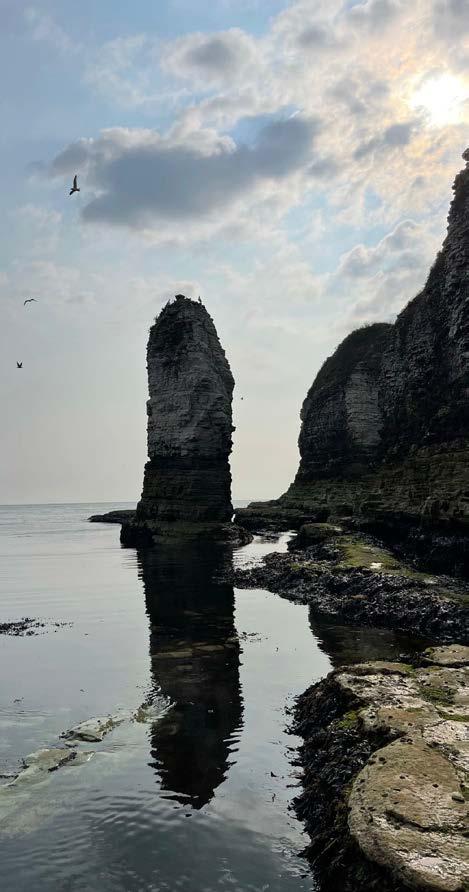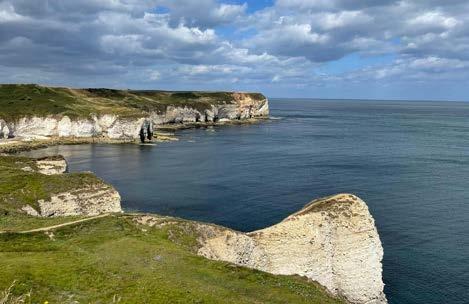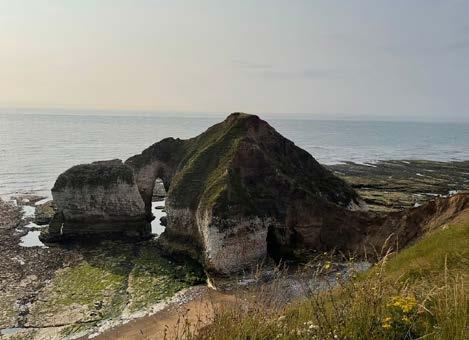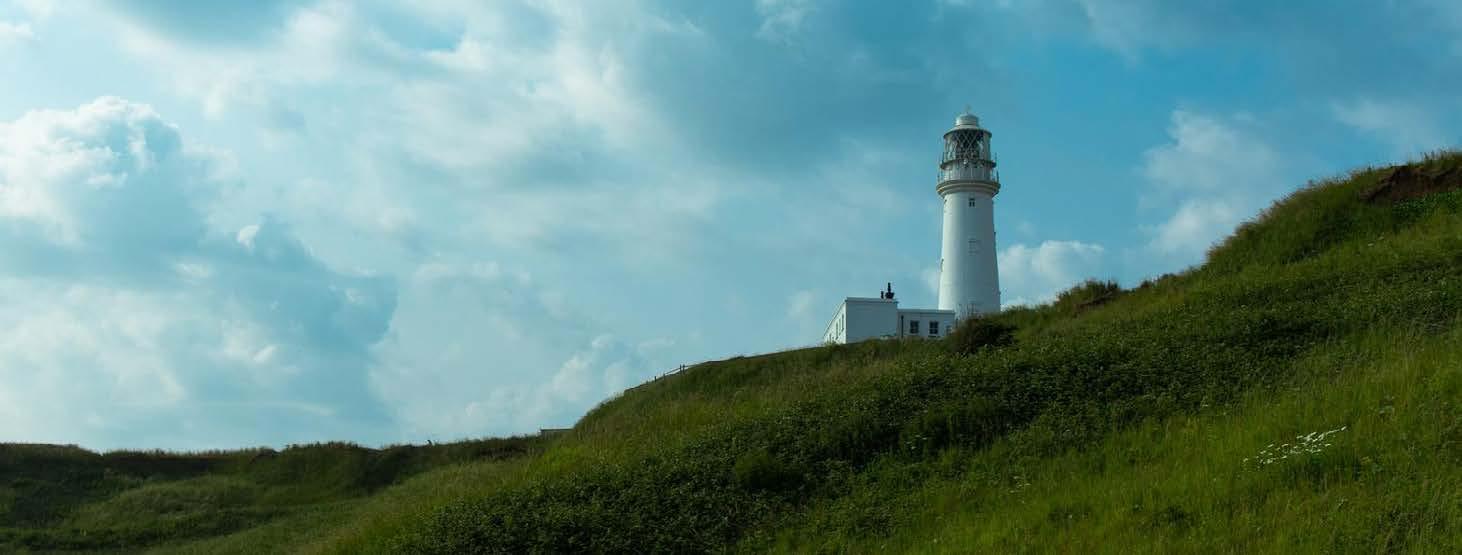
3 minute read
The Flamborough Head Lighthouse
弗蘭伯勒頭燈塔
Situated on the east coast of the United Kingdom stands a lighthouse whose history stretches all the way back to the 1600s. The headland from which the lighthouse takes its name extends several miles into the North Sea and features spectacular sheer white-chalk cliffs that rise up to 120 metres high. The cliffs provide nesting sites for many thousands of seabirds and are of international significance for their geology.
Advertisement
The first Flamborough Head Lighthouse was built is 1674 by Sir John Clayton and was made from with the milky white chalk of the cliffs on which it still stands. Believed to be one of the tallest chalk buildings in the world, the tower was an early form of maritime communication that pre-dated lighthouses and acted as a flag signalling station to relay messages from ports to inland settlements regarding the arrivals of ships and valuable cargo.
英國東海岸座落一座燈 塔,歷史可以追溯到 1600 年代。燈塔的名字取自海 岬角,綿延數英里至北 海,聳立高達 120 米陡峭 的白堊峭壁。這些懸崖爲 成千上萬的海鳥提供了築 巢的地方,其地質同樣具 有國際意義。
第一座佛萊堡頭燈塔建於 1674 年,由 John Clayton 爵 士建造,用其矗立的懸崖乳 白色的白堊所造。這座塔被 認爲是世界上最高的堊質 建築物之一,是一種早期的 海上通信形式。它早於燈塔 作為旗幟信號站,將船隻和 貴重貨物抵達的消息由港 口傳送到內陸的定點。
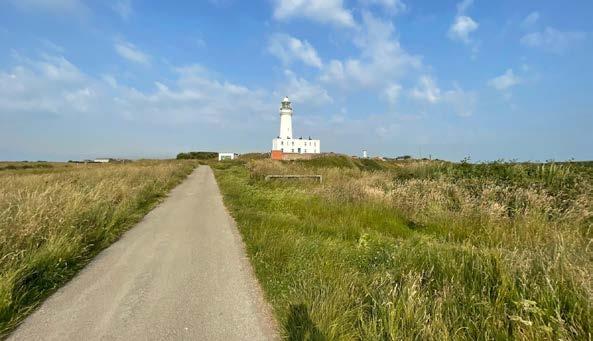
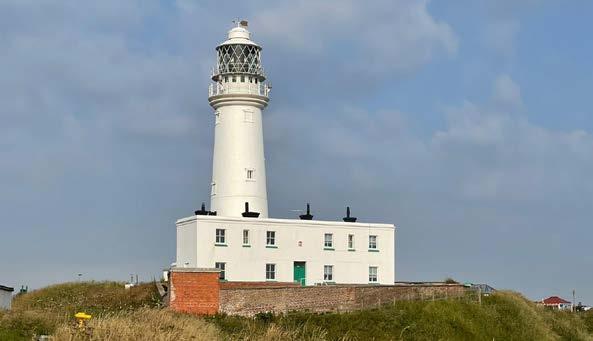
Though ultimately a fire was never lit atop the chalk tower, the building found other uses including as a signalling station for the Royal Navy and a wire station in the 19th century. Despite this, the tower’s presence was enough to deter smugglers and its looming presence was used to monitor disputes between local fishermen.
In 1806, the present lighthouse—designed by Samuel Wyatt, was first lit and is still in use today. Back then, it had a distinctive light characteristic of two white flashes followed by a red flash which was a result of the lighting apparatus provided by optics specialist George Robinson. It consisted of a revolving vertical shaft with a three-sided frame on which were mounted 21 argand lamps, seven on each side, with parabolic reflectors. On one of the three sides the reflectors were covered with red glass which was the first recorded use of red glass in a lighthouse and represented the first use of the colour as part of a light characteristic.
The lighthouse became the first lighthouse of Trinity House to use paraffin in 1872 which was only recently introduced as a lighthouse illuminant. Along with the new lamp, a new revolving optic was designed to maintain the lighthouse’s signature light characteristic with a faster revolution of 30 seconds between flashes. This was quickened once again to every 15 seconds in 1907.
In 1925, the lantern was made taller by 2.5 meters to accommodate a new 15-foot lens. The new lens is a large (first-order) revolving catadioptric optic made up of four asymmetrical panels and now only displays four white flashes every 15 seconds.
Following automation, the last lighthouse keepers left in 1996 but the lighthouse remains operational to this day. With a range of 24 nmi, it is a safe beacon for any vessel that is navigating the raging tidal conditions of the North Sea.
The Flamborough Head Lighthouse can be visited during seasonal tours and is now a Grade II listed building. Set amidst spectacular cliffs pockmarked with sea caves, sea arches and columns, the headland is a romantic and dramatic backdrop that is set to welcome intrepid mariners, nature lovers and romantics.
雖然最終堊質塔頂部從未點燃過, 但這建築物有了其他用途,包括作 為皇家海軍的信號站和 19 世紀的 電線站。儘管如此,燈塔的存在依 然足以阻止走私者,近在眼前的燈 塔同時被用以監督當地漁民之間的 爭端。
在 1806 年,由 Samuel Wyatt 設計 的現化燈塔首次點亮,至今仍在使 用。當時燈塔的特色是兩道白色閃 光,接著是一首紅色閃光,來自光學 專家 George Robinson 提供的照明 設備。它由一個旋轉的垂直軸和一 個三面框架組成,上面安裝了 21 個 弧形燈,每邊各 7 個,並裝有拋物 面反射鏡。三面其中一面反射鏡上 以紅色玻璃覆蓋,是燈塔有紀錄以 來首次使用紅色玻璃,亦代表了首 次使用顏色作爲一部分燈光特色。
1872 年,燈塔成爲三一大廈第一座 使用石蠟的燈塔,而石蠟當時才被 用作燈塔的照明燈不久。除了新的 燈具之外,還設計了一種新的旋轉 光學設備以保持燈塔的標誌性的 燈光特色,閃光之間的旋轉速度加 快至 30 秒。1907 年,這速度再次加 快到每 15 秒一次。
1925 年,該燈具加高 2.5 米,以安裝 新的 15 英尺鏡片。這種新的鏡片是 由 4 塊不對稱面板組成的大型(首 個)旋轉電差光學片,現在每 15 秒 只顯示 4 次白色閃光。
繼自動化後,最後一批燈塔看守員 於 1996 年離開,但燈塔一直運作至 今。燈塔的射程爲 24nmi,是任何 於潮汐洶涌的北海環境中航行的 船隻跟隨的安全指標。
您可在旅遊季節期間參觀現為二 級保護建築物的弗蘭伯勒頭燈塔。 海岬的海蝕洞、海拱和柱石斑駁的 懸崖峭壁充滿浪漫和戲劇色彩,歡 迎一眾勇敢的航海家、熱愛大自然 的人士和浪漫主義者到來。
